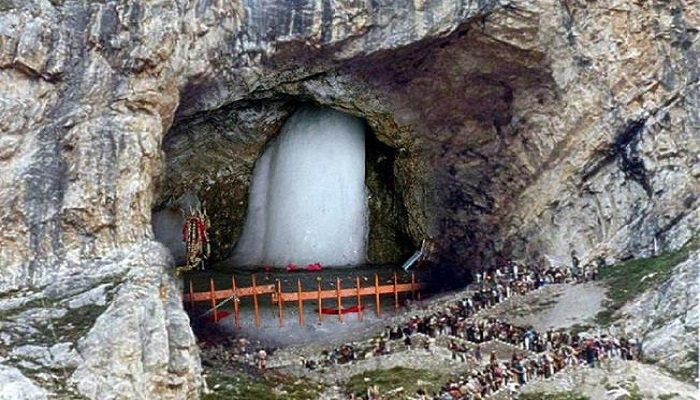
Many measures are taken by the government and organizations to protect and preserve the nature and environment. This is one such case.
In a bid to preserve the eco-sensitive Amarnath cave shrine in south Kashmir Himalayas, the National Green Tribunal on Wednesday declared it a “silence zone” and prohibited religious offerings like the chanting of mantras and ringing bells beyond the entry point.
A bench headed by NGT chairperson Justice Swatanter Kumar said the Amarnath Shrine Board should ensure that proper infrastructural facilities are provided to the pilgrims so that they are not deprived of a clear ‘darshan’, and the ecology of the area is maintained.
The NGT earlier said that declaring the area around the Amarnath cave shrine a “silence zone” would be helpful in preventing avalanches and maintaining its pristine nature.
“Nobody would be permitted to carry anything from the stairs leading to the holy cave and everybody should be properly frisked at the entry point. From the point of stairs and the area inside the cave should be declared silence zone”, the bench said.
The green panel ordered the removal of iron grills in front of the ice stalagmite resembling the ‘Shiva Linga’ so that devotees could get a better view of it and said there should be no noise pollution near the sacred structure.
It also restrained carriage of personal belongings including mobile phones beyond the last checkpoint and asked the shrine board to construct a place where pilgrims can keep their valuables.
The green panel also directed the committee of experts headed by an additional secretary of the Ministry of Environment and Forests (MoEF) to submit an action plan on providing facilities to the pilgrims within three weeks.
Environment activist Gauri Maulekhi, on whose plea the directions were passed, welcomed the NGT order and termed it “progressive”.
“The Amarnath cave is located in a delicate ecosystem.
The directions would make the Amarnath Yatra safe and convenient for the devotees. This would protect the shrine from degradation and ensure it is protected for the coming generations. It is indeed a very good and progressive direction,” Maulekhi said.
The matter will be heard again on 18 January next year.
In November, the NGT had rapped the Amarnath Shrine Board for not providing proper infrastructural facilities to pilgrims going to the cave shrine in south Kashmir Himalayas, saying it could not “deprive people of proper darshan”.
The green panel took exception to non-compliance with the directions issued by the Supreme Court in 2012 and asked the board what steps it had taken in all these years.
The bench directed the experts’ committee to submit a report on aspects such providing a proper path and declaring the cave shrine a “silence zone” while maintaining cleanliness in the area.
The Amarnath cave shrine is considered to be one of the holiest in Hinduism. The cave itself is covered with snow most of the year except for a short period of time in summer when it is open for pilgrims.

Post Your Comments